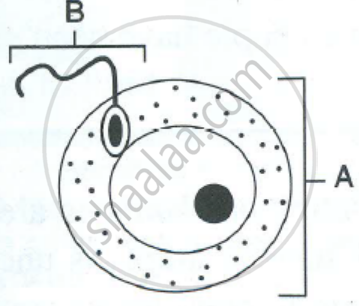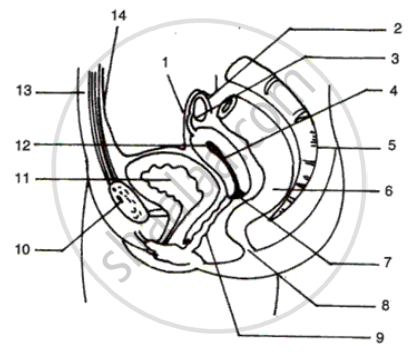Advertisements
Advertisements
Question
Fertilisation results immediately in the formation of :
(a) a zygote
(b) an embryo
(c) a placenta
(d) a foetus
Solution
(a) a zygote
A zygote is formed by the fertilisation of the egg and a sperm cell.
APPEARS IN
RELATED QUESTIONS
Describe, in brief, the changes the uterus undergoes
(i) to receive the zygote.
(ii) if zygote is not formed
What are the different methods of contraception?
What is meant by implantation?
During adolescence, several changes occur in the human body. Mark one change from the following associated with sexual maturation in boys.
The diagram below represents two reproductive cells A and B. Study the same and then answer the questions that follow:
 |
- Identify the reproductive cells A and B.
- Name the specific part of the reproductive system where the above cells are produced.
- Where in the female reproductive system do these cells unite?
- Name the main hormones secreted by the (1) ovary (2) testes.
- Name an accessory gland found in the male reproductive system and state the function of its secretion.
Diagram shows the reproductive system of female human beings:
(i) Name the parts numbered 1 to 14.
(ii) Normally, after how many days does an ovary release an egg?
(iii) Where are the sperms released during coitus?
(iv) What is the role of sperms after their ejaculation in vagina?
(v) What is the function of the organ numbered 5?
(vi) What is the gestation period in human?

Define the following:
Clone
Name the organs of the human male reproductive system and state the functions of any two organs.
Give Technical Term:
What are the age restrictions for marriages by law for boys and girls in India?
Given below are the events in human reproduction. Write them in correct sequential order.
Insemination, gametogenesis, fertilisation, parturition, gestation, implantation
